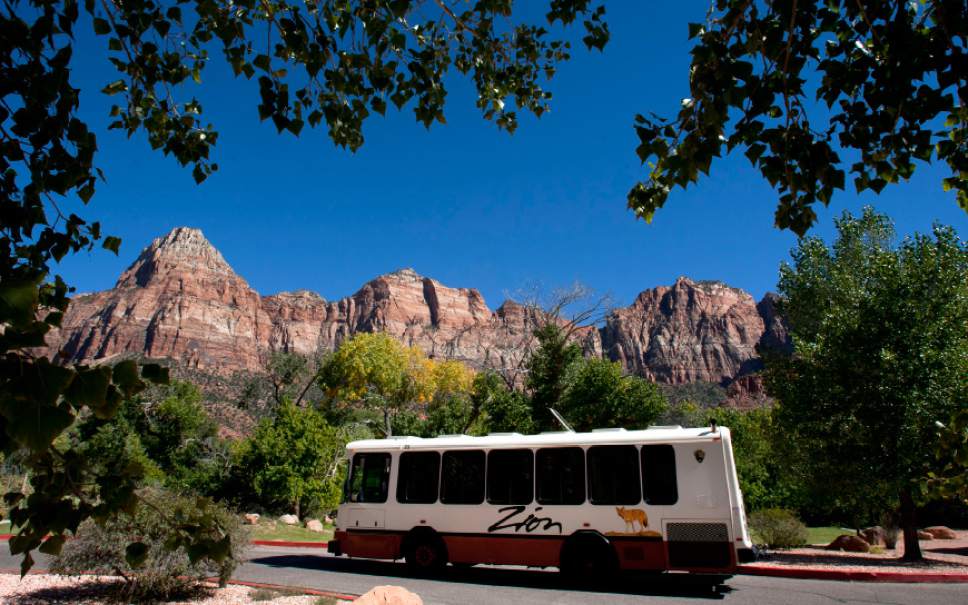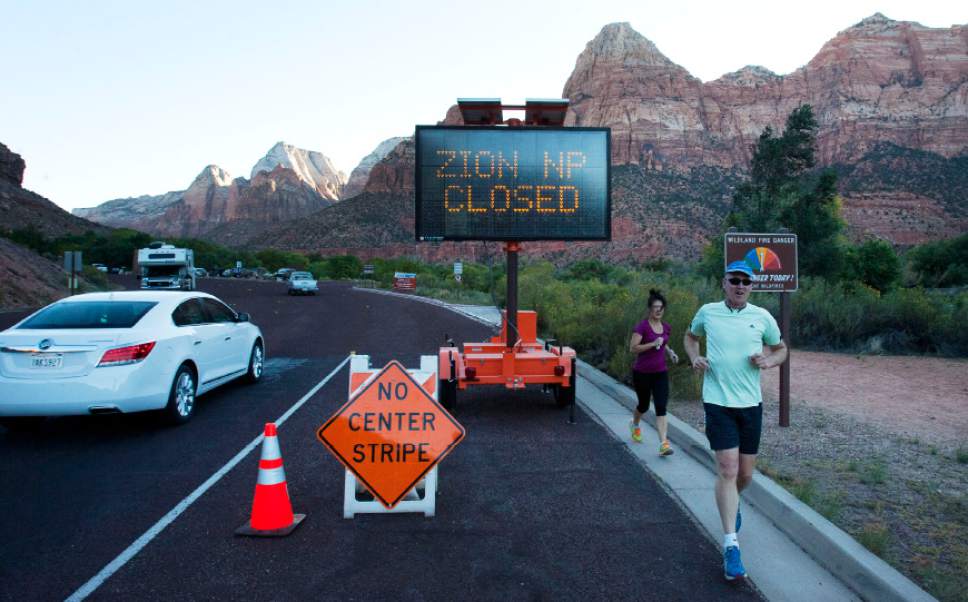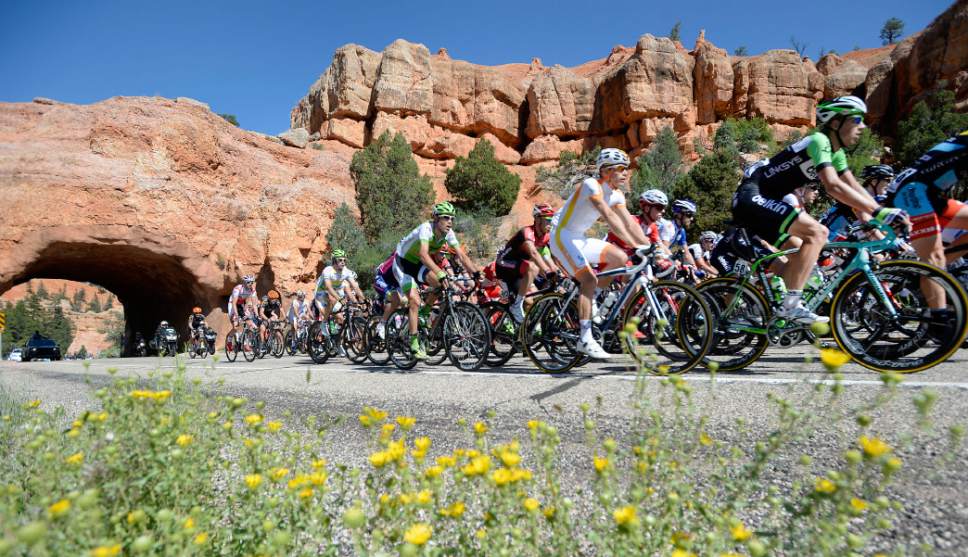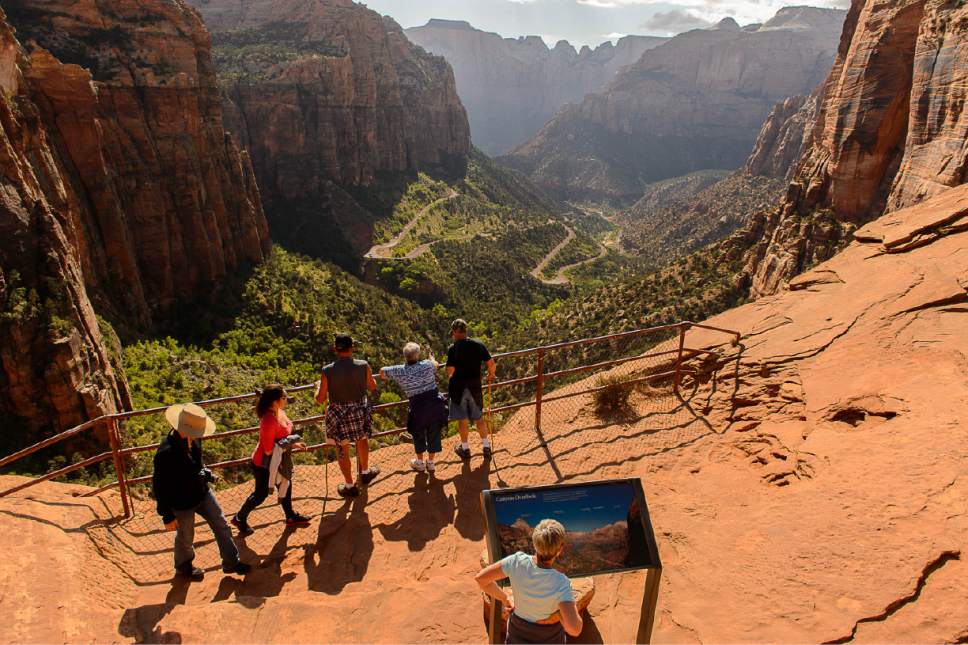This is an archived article that was published on sltrib.com in 2016, and information in the article may be outdated. It is provided only for personal research purposes and may not be reprinted.
The National Park Service announced it will allow the Tour of Utah to use Zion National Park for the opening stage of the 2016 professional bicycle race. But no spectators will be allowed along the route inside the marquee southern Utah park, and there won't be any racing to watch — the elite international riders will follow a pace car through the park after the tour kicks off in Springdale.
The permit comes with many restrictions, and officials made it clear that such consideration will not likely happen again. In a Thursday news release, the National Park Service (NPS) characterized the Aug. 1-6 ride as a "once-in-a-lifetime cycling demonstration" to promote bikes as healthy outdoor recreation and an alternative transportation inside parks.
"This will be a one-time-only event that will promote the NPS centennial goal of connecting with and creating the next generation of park visitors, supporters and advocates," the release states. "The Tour of Utah ride through the park is a unique opportunity for the NPS to connect with a large multinational audience that follows this and other cycling events."
Tour of Utah promoters say they will announce the seven stage routes on Monday. Stage 1 goes from Springdale to Cedar City, and Stage 2 goes from Escalante to Torrey.
The permit is controversial among conservationists who see it as a dangerous precedent, and some local residents say Zion, which saw a record 3.6 million visitors last year, does not need any more publicity. Rockville and Springdale, tiny towns occupying a narrow valley at the southern end of Zion Canyon, cannot comfortably accommodate the hordes of tourists as it is.
A for-profit activity with no relevant connection to the park marks a troubling departure from NPS policies, one that could allow the commercialization of national parks, according to the National Parks Conservation Association.
The race would degrade the visitor experience, divert staff and resources already stretched way too thin, and disturb wildlife, David Nimkin, the group's Southwest regional director, wrote to the park in April.
"Zion National Park is a treasured landscape, and in the NPS centennial year, we should honor the vision of those who worked to protect it by preserving the resources and the awe-inspiring experiences that already draw millions of visitors from around the world each year," Nimkin wrote.
As with other members of Utah's "Mighty Five" national parks, Zion visitation was up 14 percent last year and is on track for another banner year.
According to Nimkin, Zion visitation is up 34 percent since 2008, yet its operating budget is down 5 percent.
"That is not a sustainable trend line. You can' t keep putting more people in this space and not provide more funds to manage this," Nimkin said. "I'm all for promoting the parks, but there is a sense that we have a reasonable expectation of what a park experience should be."
He noted that many other southern Utah towns would relish the chance of hosting a tour stage and wondered why the tour didn't select Kanab for the start of Stage 1.
Many locals fear crowding is already degrading Zion's world-famous visitor experience and that publicity generated by a premier cycling event will make matters worse.
U.S. visitation dips in August, often the hottest time of year, but it's also a traditional vacation time for Europeans who flock to southern Utah.
The NPS seemed to honor conservationists' concerns in the way it structured the permit and framed its purpose.
The park, for example, rejected tour organizers' proposed use of a helicopter for filming "to protect nesting activity and habitat for federally threatened and endangered animals, as well as protect soundscape and wilderness values."
Park staff members will try to haze bighorn sheep and deer away from the road, but the cyclists will be stopped if wildlife poses a hazard.
The permit took months to finalize because of the many measures needed to minimize the event's disruption to park operations and ensure its relevance to the agency's 100th birthday, according to park spokeswoman Aly Baltrus. For example, figuring out how to illuminate a mile-long tunnel was particularly difficult because the park insisted no equipment could be attached to the structure, itself a piece of road-building history.
The problem will be solved with lamps attached to motorcycles. The system was tested and meets recommendations put out by the Illuminating Engineering Society of North America.
The park road will be closed for the 30 to 45 minutes the riders are present, and 20 Utah Highway Patrol units will help herd vehicles to the curb during the closure. The Utah Department of Transportation will manage the road closure at the east of State Road 9, where it joins U.S. Highway 9 at Mount Carmel Junction.
Officials required an early-morning start when visitations are normally low and refused to allow staging areas inside the park. The race is to start at 8 a.m. Aug. 1, a Monday, and it's planned that the road will be reopened for public use in less than an hour.
The narrow, winding stretches of SR-9 wouldn't offer many suitable places for staging and spectating anyway. Spectators will be welcome to line the highway east of the park between the eastern entrance to Mount Carmel Junction, the NPS said. From there, the route is expected to turn north onto U.S. Highway 89.
Brian Maffly covers public lands for The Salt Lake Tribune. Maffly can be reached at bmaffly@sltrib.com or 801-257-8713.
Twitter: @brianmaffly











